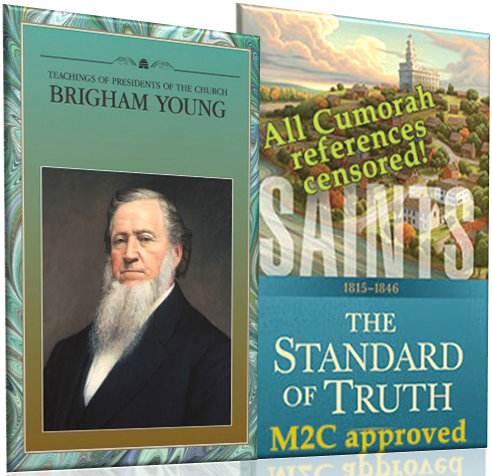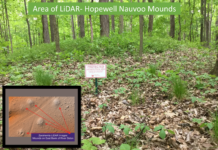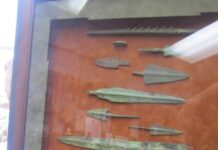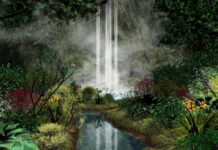My Purpose
“What that Historian did with the Reputation of the President of the Church was not Worth Doing.”
Elder Packer said, “Some historians write and speak as though the only ones to read or listen are mature, experienced historians. They write and speak to a very narrow audience. Unfortunately, many of the things they tell one another are not uplifting, go far beyond the audience they may have intended, and destroy faith. What that historian did with the reputation of the President of the Church was not worth doing. He seemed determined to convince everyone that the prophet was a man. We knew that already. All of the prophets and all of the Apostles have been men. It would have been much more worthwhile for him to have convinced us that the man was a prophet, a fact quite as true as the fact that he was a man.” The Mantle Is Far, Far Greater Than the Intellect Elder Boyd K. Packer
Quotes about Intellectual Opinions
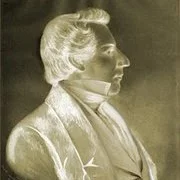 “Mormonism, as it is called, must stand or fall on the story of Joseph Smith. He was either a Prophet of God, divinely called, properly appointed and commissioned or he was one of the biggest frauds this world has ever seen. There is no middle ground. If Joseph was a deceiver, who willfully attempted to mislead people, then he should be exposed, his claims should be refuted, and his doctrines shown to be false” .Joseph Fielding Smith, Doctrines of Salvation, vol. 1 (Bookcraft, 1960), 188
“Mormonism, as it is called, must stand or fall on the story of Joseph Smith. He was either a Prophet of God, divinely called, properly appointed and commissioned or he was one of the biggest frauds this world has ever seen. There is no middle ground. If Joseph was a deceiver, who willfully attempted to mislead people, then he should be exposed, his claims should be refuted, and his doctrines shown to be false” .Joseph Fielding Smith, Doctrines of Salvation, vol. 1 (Bookcraft, 1960), 188
I have come to believe that it is the tendency for many members of the Church who spend a great deal of time in academic research to begin to judge the Church, its doctrine, organization, and leadership, present and past, by the principles of their own profession. Ofttimes this is done unwittingly, and some of it, perhaps, is not harmful. The Mantle Is Far, Far Greater Than the Intellect Elder Boyd K. Packer
 “This problem has affected some of those who have taught and have written about the history of the Church. These professors say of themselves that religious faith has little influence on Mormon scholars. They say this because, obviously, they are not simply Latter-day Saints but are also intellectuals trained, for the most part, in secular institutions. They would that some historians who are Latter-day Saints write history as they were taught in graduate school, rather than as Mormons.” The Mantle Is Far, Far Greater Than the Intellect Elder Boyd K. Packer
“This problem has affected some of those who have taught and have written about the history of the Church. These professors say of themselves that religious faith has little influence on Mormon scholars. They say this because, obviously, they are not simply Latter-day Saints but are also intellectuals trained, for the most part, in secular institutions. They would that some historians who are Latter-day Saints write history as they were taught in graduate school, rather than as Mormons.” The Mantle Is Far, Far Greater Than the Intellect Elder Boyd K. Packer
“President Brigham Young admonished Karl G. Maeser not to teach even the times table without the Spirit of the Lord. How much more essential is that Spirit in the research, the writing, and the teaching of Church history.” The Mantle Is Far, Far Greater Than the Intellect Elder Boyd K. Packer
Faith Crisis

I don’t believe these quotes above were said too long ago for us to believe them today. Why do we at times become complacent with older quotes of Prophets and look for new and out of the box thinking? I love the quotes above and know many intellectuals at BYU and in may Stakes, try too much to come up with new and seemingly progressive ideas. Say no the revisionists, and stick with traditional values which are still important today. It’s been a few years since the amazing “Faith Crisis” books of the Stoddard’s have come to light, but they are more relevant today than ever. I challenge you to read them and have your children who may have a faith crisis read them. All will learn that it’s ok to be traditional.
Why Edits by either our Church History Department, or Correlation?
Why do we keep finding information in our Church Manuals that has been in my opinion, most likely edited by either our Church History Department, or Correlation, or someone in those departments that has biased opinions? If we have found these few examples over the years, how many other alterations will we find? I believe about 70-80% of scholars and intellectuals who work for the church, believe and teach that the Book of Mormon events happened in Mesoamerica, [Groupthink], so they also have to find a hill Cumorah somewhere in Mexico to validate their theory. The official Church position is neutrality about where the BofM events happened. I believe events happened in North America.
Teachings of the Presidents, Brigham Young Manual, Chapter 47
| Teachings of the Presidents, Brigham Young Manual, Chapter 47: President Brigham Young’s Witness of the Prophet Joseph Smith | Original talk by Brigham Young, delivered June 21 1874, Journal of Discourses Vol. 18 p. 239 |
| When Joseph first received the knowledge of the plates that were in the hill Cumorah, he did not then receive the keys of the Aaronic Priesthood, he merely received the knowledge that the plates were there, and that the Lord would bring them forth. … He received the knowledge that [early inhabitants of the Americas] were once in possession of the Gospel, and from that time he went on, step by step, until he obtained the plates, and the Urim and Thummim and had power to translate them. | When Joseph first received the knowledge of the plates that were in the hill Cumorah, he did not then receive the keys of the Aaronic Priesthood, he merely received the knowledge that the plates were there, and that the Lord would bring them forth, and that they contained the history of the aborigines of this country. He received the knowledge that they were once in possession of the Gospel, and from that time he went on, step by step, until he obtained the plates, and the Urim and Thummim and had power to translate them. |
This edit above is obvious to me that someone didn’t want our teaching manual to print a correct quote, probably because of their own bias about the Mesoamerican theory.
Elder Oaks said, “I maintain that the issue of the historicity of the Book of Mormon is basically a difference between those who rely exclusively on scholarship [Mesoamecanist] and those who rely on a combination of scholarship, faith, and revelation [Heartlanders]. Those who rely exclusively on scholarship reject revelation and fulfill Nephi’s prophecy that in the last days men “shall teach with their learning, and deny the Holy Ghost, which giveth utterance” (2 Ne. 28:4). — Dallin H. Oaks, 29 October 1993, Complete article here- The Historicity of the Book of Mormon (Parentheses, words, color, and emphasis added.)
To see the other edits and changes to the Teachings of the Prophet Joseph Smith Manual and the new “Saints” book, visit by other blog at, https://www.bofm.blog/why-edit-joseph-smiths-words-continued/
Why an Omission in the Wentworth Letter?
Why was it omitted? We can only guess. What words were edited? Read for your self the 900 words left out of our manual and decide yourself. Personally I believe a historian or editor who may have a different belief in geography than I do, may have done it. How else can it be explained? In no way do I believe the Prophet or Apostles had any knowledge of the omission and they would not do such a thing. They are men of God whom I love and respect. The Church is neutral on where the geography of the Book of Mormon happened and that is fine with me. Personally I don’t have to be neutral and I believe strongly that the Nephites began in Florida and up to the Heartland of the United States. See my blog here, and here for details.
The Wentworth Letter
Joseph Smith said, “I was also informed concerning the aboriginal inhabitants of this country [When you click on the link available at the JSP on the word “country”, the note says, “United States of America. North American constitutional republic. Constitution ratified, 17 Sept. 1787. Population in 1805 about 6,000,000; in 1830 about 13,000,000; and in 1844 about 20,000,000. Louisiana Purchase, 1803, doubled size of U.S. Consisted of seventeen states at time …”]
JSP continued, “and shown who they were, and from whence they came; a brief sketch of their origin, progress, civilization, laws, governments, of their righteousness and iniquity, and the blessings of God being finally withdrawn from them as a people, was [also] made known unto me; I was also told where were deposited some plates on which were engraven an abridgment of the records of the ancient prophets that had existed on this continent. The angel appeared to me three times the same night and unfolded the same things. After having received many visits from the angels of God, unfolding the majesty and glory of the events that should transpire in the last days, on the morning of the 22nd of September, A.D. 1827, the angel of the Lord delivered the records into my hands. These records were engraven on plates which had the appearance of gold. Each plate was six inches wide and eight inches long, and not quite so thick as common tin. They were filled with engravings, in Egyptian characters, and bound together in a volume as the leaves of a book, with three rings running through the whole. The volume was something near six inches in thickness, a part of which was sealed. The characters on the unsealed part were small, and beautifully engraved. The whole book exhibited many marks of antiquity in its construction and much skill in the art of engraving. With the records was found a curious instrument, which the ancients called “Urim and Thummim,” which consisted of two transparent stones set in the rims of a bow fastened to a breastplate. Through the medium of the Urim and Thummim I translated the record by the gift and power of God. *In this important and interesting book the history of ancient America is unfolded, from its first settlement by a colony that came from the Tower of Babel at the confusion of languages to the beginning of the fifth century of the Christian era. We are informed by these records that America in ancient times has been inhabited by two distinct races of people. The first were called Jaredites and came directly from the Tower of Babel. The second race came directly from the city of Jerusalem about six hundred years before Christ. They were principally Israelites of the descendants of Joseph. The Jaredites were destroyed about the time that the Israelites came from Jerusalem, who succeeded them in the inheritance of the country. The principal nation of the second race fell in battle towards the close of the fourth century. The remnant are the Indians that now inhabit this country. This book also tells us that our Savior made His appearance upon this continent after His Resurrection; that He planted the gospel here in all its fulness, and richness, and power, and blessing; that they had apostles, prophets, pastors, teachers, and evangelists—the same order, the same priesthood, the same ordinances, gifts, powers, and blessings, as were enjoyed on the eastern continent; that the people were cut off in consequence of their transgressions; that the last of their prophets who existed among them was commanded to write an abridgment of their prophecies, history, etc., and to hide it up in the earth; and that it should come forth and be united with the Bible for the accomplishment of the purposes of God in the last days. For a more particular account I would refer to the Book of Mormon, which can be purchased at Nauvoo, or from any of our traveling elders.” Portion of the Wentworth Letter by Joseph Smith *Highlighted areas in orange above omitted from Teachings of Presidents of the Church: Joseph Smith, The Church of Jesus Christ of Latter-day Saints, Salt Lake City, Utah, [2011] Chapter 38, p. 441; first paragraph: “. . . This book . . . tells us . . .” See Joseph Smith Papers here: Letter from John Wentworth, 25 May 1844 Download Audio Here
From Saints Volumes
“We have discovered more revisionist history in the SAINTS book. Three revelations (D&C 28, 30 & 32) were given to Joseph Smith to send the first 4 missionaries on a singular mission to….the LAMANITES! Every revealed call said so. The Lord himself even proclaimed He would go with them as their advocate. SAINTS completely censors the word “Lamanites” from these revelations, claiming instead that the missionaries were simply “on their way to the West” (p103) or Oliver’s “mission to the West” (p108) where “the Lord had called them to preach to the American Indians…” (p105), which term is absent from any of the revelations while redacting the term “Lamanites” which was used in every one of the revelations. Why? Mesomania, of course. If the American Indians were Lamanites, that makes it more difficult to accept the Meso theories. So, to keep it geography neutral, they altered the Lord’s very words to accommodate M2C.” Jonathan Neville (Mesoamerican 2-Cumorah Theory)
Rod Meldrum explains this error in the video clip below:


Indian-Mormon Encounters in the 1830s and 1840s
A Church article under History Topics said, “The Book of Mormon was published the same year the Indian Removal Act passed. It gave Church members a different perspective on the past history and future destiny of American Indians. The early Saints believed that all American Indians were the descendants of Book of Mormon peoples, and that they shared a covenant heritage connecting them to ancient Israel. They often held the same prejudices toward Indians shared by other European Americans, but Latter-day Saints believed Native Americans were heirs to God’s promises even though they now suffered for once having rejected the gospel. This belief instilled in the early Saints a deeply felt obligation to bring the message of the Book of Mormon to American Indians.
Within months of the founding of the Church in 1830, Latter-day Saint missionaries journeyed to Indian Territory, on the borders of the United States. Parley P. Pratt reported that William Anderson (Kik-Tha-We-Nund), the leader of a group of Delaware (Lenape) who had relocated to the area near Independence, Missouri, warmly received the missionaries, and an interpreter told Oliver Cowdery that the “chief says he believes every word” of the Book of Mormon. However, a government agent soon barred them from further evangelizing among Indians in the area because they had not secured proper authorization. Latter-day Saint interactions with American Indians remained sparse for the next few years, though Pratt and others still spoke of a day when Indians would embrace the Book of Mormon.

Joseph Smith preaching to American Indians.
Amid troubles in Missouri during the 1830s, Church leaders were cautious about contact with local Native groups, having been accused by their enemies of using missionary work to cultivate sedition among the Indians. During the 1840s, Joseph Smith and the First Presidency sent missionaries to the Sioux (Dakota), Potawatomi (Bodéwadmi), Stockbridge (Mahican), and other Indian peoples residing in Wisconsin and Canada. Delegations from the Sauk (Asakiwaki) and Fox (Meskwaki) tribes met in Nauvoo with Joseph Smith, who told them of the Book of Mormon and plans to raise up a New Jerusalem. Two years later, Potawatomi leaders asked Joseph and the Mormons to lend aid and join an alliance of confederated tribes. Joseph declined but assured them the Book of Mormon could light the way toward peaceful relationships. After Joseph’s death, the Council of Fifty, under Brigham Young’s leadership, discussed a broader alliance with Indian nations but ceased diplomatic efforts in 1846 in order to organize the Saints’ migration west.” https://www.churchofjesuschrist.org/study/history/topics/american-indians?lang=eng
2016 Doctrine and Covenants Study Manual
by Bruce Lloyd
“This 2016 Doctrine and Covenants study manual refers to the Lamanite Mission and the Autobiography of Parley P. Pratt, but it doesn’t mention that Parley told the Delaware Indians about Moroni and the metal plates deposited in the hill Cumorah in western New York near Palmyra. The Preface to Revelations in Context states: “The stories in this collection, which treat almost all of the sections in the Doctrine and Covenants, were written by historians in the Church History Department. In telling these stories, the authors brought to bear both their faith in the restored gospel and their training and expertise in American and Mormon history. Particularly important to this series was the Joseph Smith Papers Project, which has provided a foundation of meticulous scholarship upon which all historical interpretation of Joseph Smith’s life and work should build. Citations to the Joseph Smith Papers in Revelations in Context typically direct the reader to the documents and materials generously made available on josephsmithpapers.org.” Sadly, Saints, The Standard of Truth, 1815-1846, Vol 1, calls it a “mission to the West” vice “mission to the Lamanites” on pages 98 and 108. Footnote 22 on page 98 refers to: Doctrine and Covenants 30:5–8 (Revelation, Sept. 1830–D, at josephsmithpapers.org); Doctrine and Covenants 32 (Revelation, Oct. 1830–A, at josephsmithpapers.org); Joseph Smith History, 1838–56, volume A-1, 60, in JSP, H1:458–60 (draft 2); Givens and Grow, Parley P. Pratt, 36.Doctrine and Covenants 30:5–8Revelation, Sept. 1830–DDoctrine and Covenants 32Revelation, Oct. 1830–AJoseph Smith History, 1838–56, volume A-1, 60
The footnote is flawed. It should point to Oliver’s preaching to the Delaware Indians and Moroni and the Hill Cumorah. I guess flawed narrative has to point to a flawed footnote. Why no mention of Section 28? I don’t know what is on page 36 of Parley P. Pratt. My missionary Triple Combination (Copyright 1970) that I used in the Ontario Quebec Mission from Nov 1971 to Nov 1973 uses the words “mission to the Lamanites” in the section headings for Sections 28 (mentions Lamanites 3 times in the scriptural text) and 30 (Lamanites mentioned 1 time in the scriptural text). The section heading to Section 32 mentions “Lamanites” once and “Indian tribes in the west” once. The scriptural text uses the words “into the wilderness among the Lamanites.” My 1980 Copyright Triple Combination scriptures in Section 28 in the heading doesn’t say anything about Oliver’s mission to the Lamanites and has several fewer sentences than the 1970 version. The subheading for verses 1-7 does state, “Oliver Cowdery is to preach to the Lamanites.” The scriptural text does mention Lamanites 3 times like the 1970 version. Section 30 has different verbiage and no reference to Oliver Cowdery’s mission to the Lamanites in the heading. The subheading for versus 5-8 does state, “Peter Whitmer, Jun., is to accompany Oliver Cowdery on a mission to the Lamanites.” The scriptural text does mention Lamanites 1 time like the 1970 version. Section 32 has different verbiage in the heading and deletes the word “yearning” from “yearning desires.” The last sentence from the 1970 version has been excluded in the 1980 version, “The missionaries admonished to confine themselves to the expounding of the written word, as they shall be given understanding thereof.” The subheading for verses 1-3 does state, “preach to the Lamanites.” The scriptural text matches the 1970 version and uses the words “into the wilderness among the Lamanites.” As you can see, the 1980 version is drifting away from the “mission to the Lamanites” verbiage. I didn’t compare with the online version.” Bruce Lloyd Pleasant Grove, UT
Why “Saints” doesn’t use the word “Cumorah” in their book. (In the editor’s own words below.)
Saints and Book of Mormon Geography Jed Woodworth and Matt Grow
12 October 2018 Source
Woodworth and Grow in black and red text below. My words in blue below.
Church Historians Opinions
Truth comes from Personal and Doctrinal Revelation from Christ, and Scriptures translated correctly from Christ, not opinion. Information that comes from You or Myself, or from Church Historians, or BYU Intellects, is all the same. We read, we study, we pray, and we stick to our biases. If we don’t have revelation, the second best choice is Canonized Scripture.
A quote by Book of Mormon Central, from the article titled “The Spectacles, the Stone, the Hat, and the Book: A Twenty-first Century Believer’s View of the Book of Mormon Translation”, by Roger Nicolson says, “These accounts come from both believing and nonbelieving sources, and some skepticism ought to be employed in choosing to accept some of the interpretations offered by some of these sources as fact.” This quote above, is why we should learn from the scriptures about the true instruments used to translate the Book of Mormon.
Actual Instruments Used in Translation
Because there is no official Church Doctrine on the translation method, Scriptures can prove Joseph’s Translation Tools and Method. No one can accurately define exactly what the “gift and power of God” means, but we know Joseph used what was found in the stone box. Plates, breastplate, spectacles. That’s it! How they worked or what the Spirit did to assist Joseph we know not, but those three instruments WERE used.
Because Joseph was commanded to not show anyone these 3 items unless commanded, I show two paintings by Ann Marie Oborn that will show you what the scriptures suggest in my opinion.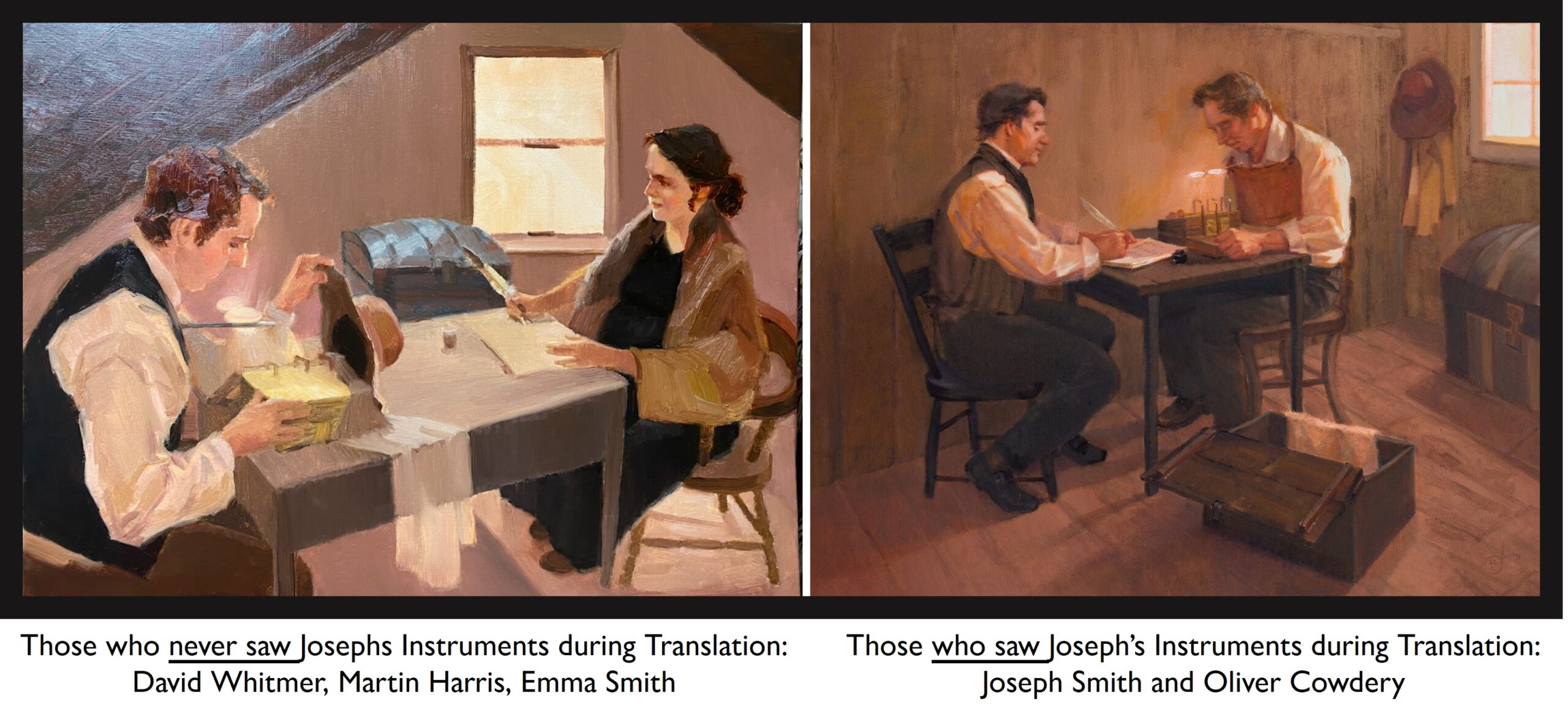 Full Blog Here
Full Blog Here

